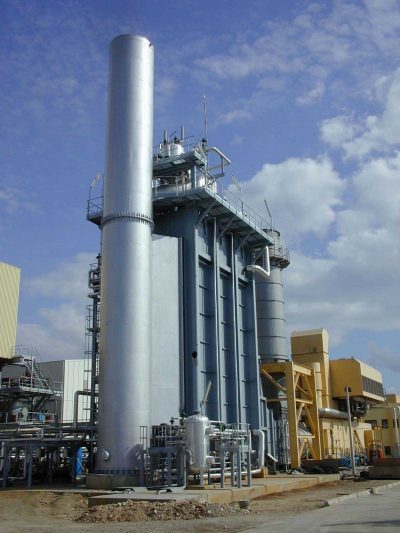A waste heat boiler is a steam boiler that uses hot flue gases or hot waste air flows from an external process as an energy source to generate steam. This external energy source often takes the form of hot exhaust gases from a gas turbine or flue gases from a process oven, furnace, incinerator, biomass power plant, or municipal waste incineration plant. Waste heat boilers can be designed as both fire tube and water tube boilers depending on the required capacity and steam pressure. Heat Recovery Steam Generator (HRSG) is another term used to refer to a Waste Heat Boiler (WHB).

Sometimes an auxiliary burner is used to increase the temperature of the flue gases or hot waste air flows. This burner can be used to increase the steam temperature and/or capacity. If an elevated burner capacity is chosen, it can also be used to produce steam when no flue gases or hot waste air flows are available. This type of operation is referred to as the fresh air [FA] mode.
A waste heat boiler delivers steam that can be used as an energy carrier in a wide range of industrial processes. At high pressures and temperatures, a steam turbine is often also used for electricity generation. This system is known as a Combined Cycle Power plant.
Depending on the size parameters of fire tube boilers, the steam boiler can be equipped with an additional (internal or external) heat exchanger to combine a directly fired boiler (with a burner) with a waste heat flow, generally referred to as a waste heat bundle. In this configuration, the hot exhaust gases from a gas engine or heat flows from a combined heat and power plant contribute to steam production. This option is used in hospitals and similar institutions.

